
Course Content
Example 1
A student makes the following statements.
The equivalent dose received by a sample of tissue in proximity to a radioactive source is:
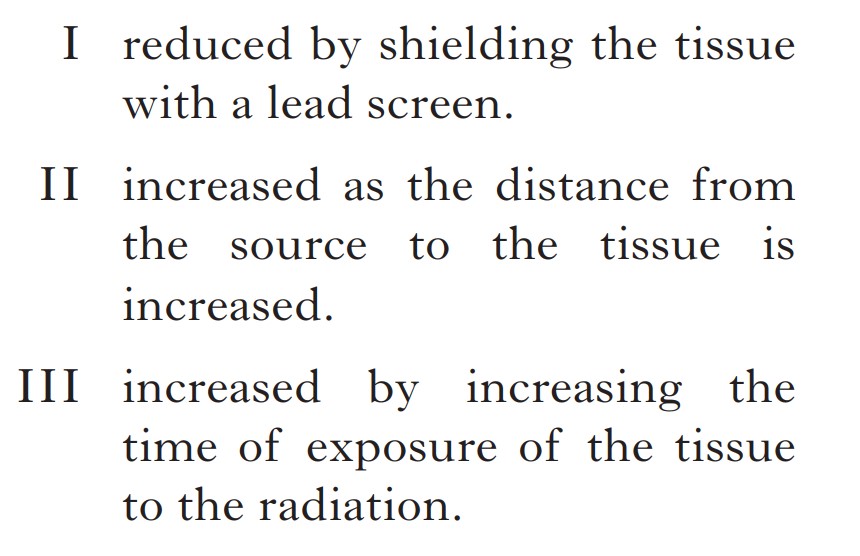
Which of these statements is/are correct?
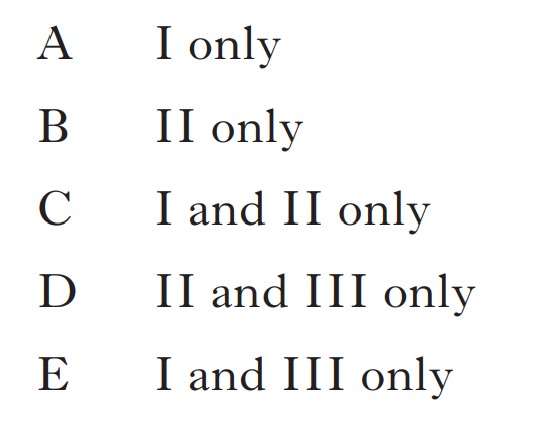
Lets rule out every option:
The first statement is correct
Lead will absorb radiation and therefore reduce the equivalent dose rate.
The second statement is not correct
As the distance from source increases, the equivalent dose received by the tissue decreases.
The third statement is correct
If you spend more time next to a radioactive source, you will receive more radiation!
So:
The correct statement is E
Example 2
A scientist receives an absorbed does of 20mGy from gamma radiation.
(i) Calculate the equivalent dose received by the scientist.
(The weighting factor of gamma radiation is 1 )
(ii) A sample of the gamma source has an activity of 3MBq.
Calculate the number of decays in one minute.
(i) We use the formula:
H = DWR
H = 20 x 10-3 x 1
H = 20 x 10-3 Sv
(ii) We use the formula and re-arrange:
A = N⁄t
N = At
N = 3 x 106 x 60
N = 1.8 x 108 decays
Example 3
A radioactive source emits α, β and γ radiation.
Sheets or aluminium and paper are placed close to the source as shown.
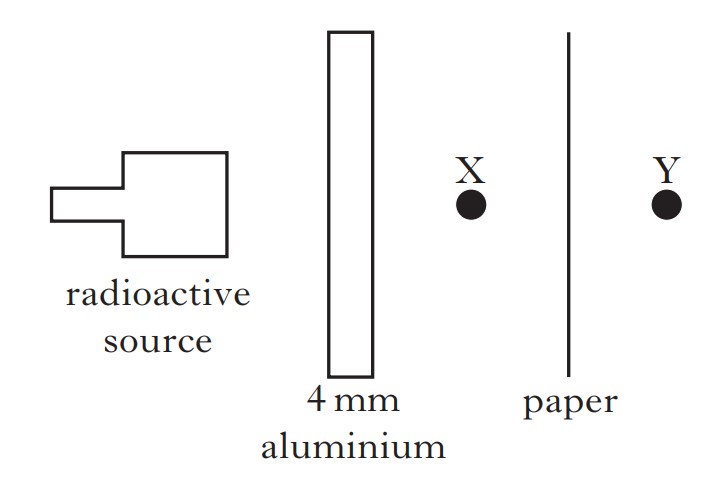
Which row in the table shows the radiation(s) from the source detected at points X and Y?
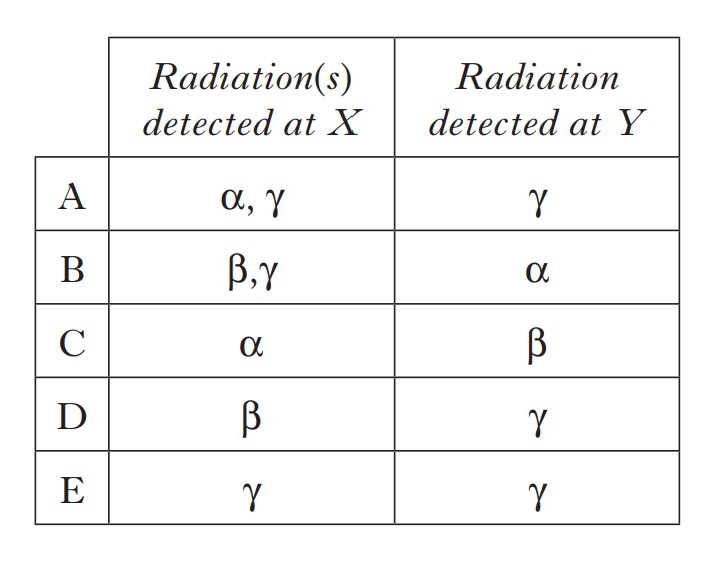
Lets take a moment to gather our knowledge of radiation.
We know that:
Alpha radiation is absorbed by a few centimetres of air or a sheet of paper.
Beta radiation is absorbed by a few millimetres of aluminium
Gamma radiation is mostly absorbed by a few centimetres of lead.
So the only radiation that can be detected at X is γ radiation, as both α and β radiation is absorbed by the aluminium.
Therefore, only γ radiation is detected at Y. So:
The correct row is E
Example 4
It is possible to determine the age of a prehistoric wooden boat by measuring the activity of radioactive carbon-14.
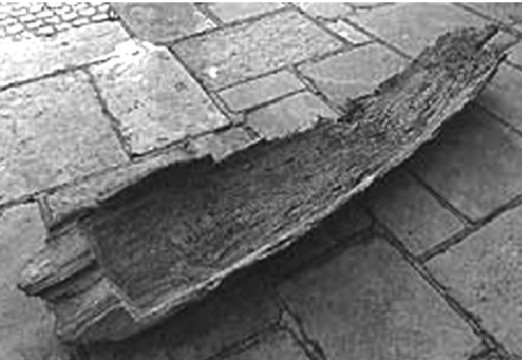
The activity of a piece of wood from the boat is 300µBq
When the boat was carved, the activity of the piece of wood was 2400µBq due to carbon-14 atoms.
The half-life is 5730 years.
(a) Define the term half-life
(b) Calculate the age of the boat.
(c) Carbon-14 emits beta particles. What is a beta particle?
(d) A radioactive source emits alpha particles. What is an alpha particle?
(e) How does the ionisation density of alpha particles compare with that of beta particles?
(a) The half-life is the time taken for the activity of a radioactive source to reduce by half.
(b) To calculate the half-life, we need to work out how many times an activity of 2400µBq halves till it gets to an activity of 300µBq:

So there are 3 half-lives.
Now we multiply the number of half-lives by the time of one half-life for carbon-14:
Age = 3 x 5730
Age = 17200 years (rounded to 3 s.f.)
(c) A beta particle is a fast moving electron.
(d) An alpha particle is 2 protons and 2 neutrons (or a helium nucleus).
(e) The ionisation density of alpha particles is greater than the ionisation density of beta particles.
Example 5
The crew on an aircraft during a transatlantic flight are exposed to cosmic radiation at an equivalent dose rate of 5 µSv h-1
The crew complete 6 transatlantic flights each month. The average duration of a flight is 8 hours.
What is the equivalent dose received by the crew due to cosmic radiation during transatlantic flights in one year?
First, lets calculate the equivalent dose received per flight:
Ḣ = H⁄t
H = Ḣt
H = 5 x 8
H = 40 µSv
So per month:
H = 6 x 40 = 240 µSv
So in one year:
H = 240 x 12
H = 2880 µSv
Example 6
A radioactive tracer is injected into a patient to enable doctors to check the function of a patient's kidneys.
Radiation from the tracer is monitored outside the patient's body by a detector.
Which row in the table shows the most suitable type of radiation emitted and the half-life for the tracer?
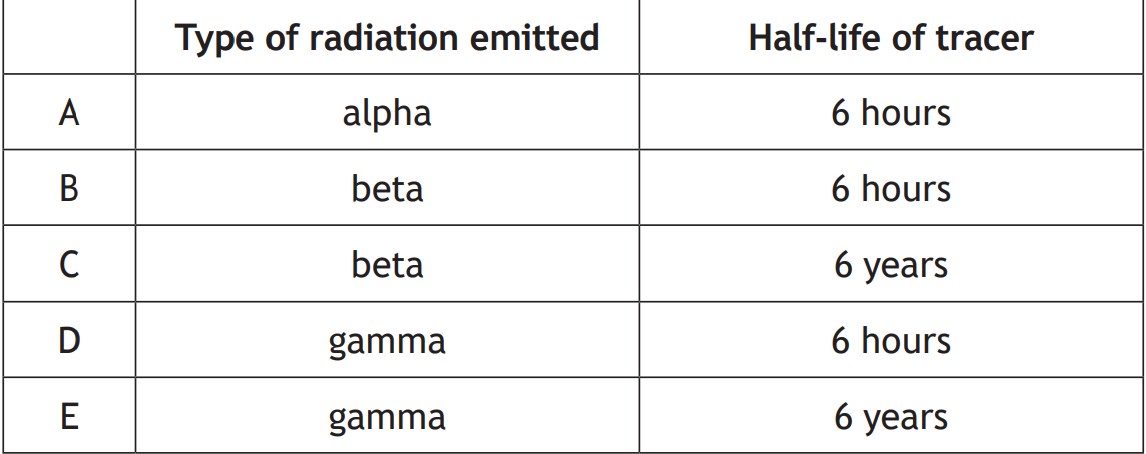
Remember, the tracer's radiation needs to be detected outside the body.
This means the tracer needs to penetrate through the body.
The only radiation that is strong enough to penetrate through the body is gamma radiation.
A radioactive tracer must have a short half-life so the patient does not have a dangerous amount of radiation in their body by the time they leave the hospital.
So the answer is D
Example 7
A uniform electric field exists between two oppositely charged parallel metal plates.
An alpha particle, a beta particle and a gamma ray each pass between the metal plates.
They follow different paths as shown.

Which row in the table shows the types of radiation that follow paths, X, Y and Z?

In this question, we need to acknowledge the charges of each radiation.
Alpha radiation has a positive charge, so it should be attracted to a negative plate.
This means the path Z is alpha.
Beta radiation has a negative charge, so it should be attracted to a positive plate.
This means the path X is beta.
Gamma radiation has no charge, so it shouldn't be affected by any plate.
This means the path Y is gamma.
So the answer is D
Example 8
During radiation treatment, a patient's liver absorbs 90 µJ of gamma radiation.
The mass of the liver is 2kg.
What is the absorbed dose received by the liver?
In this question, we use the formula:
D = E⁄m
D = 90 x 10-6⁄2
D = 4.5 x 10 -5Gy